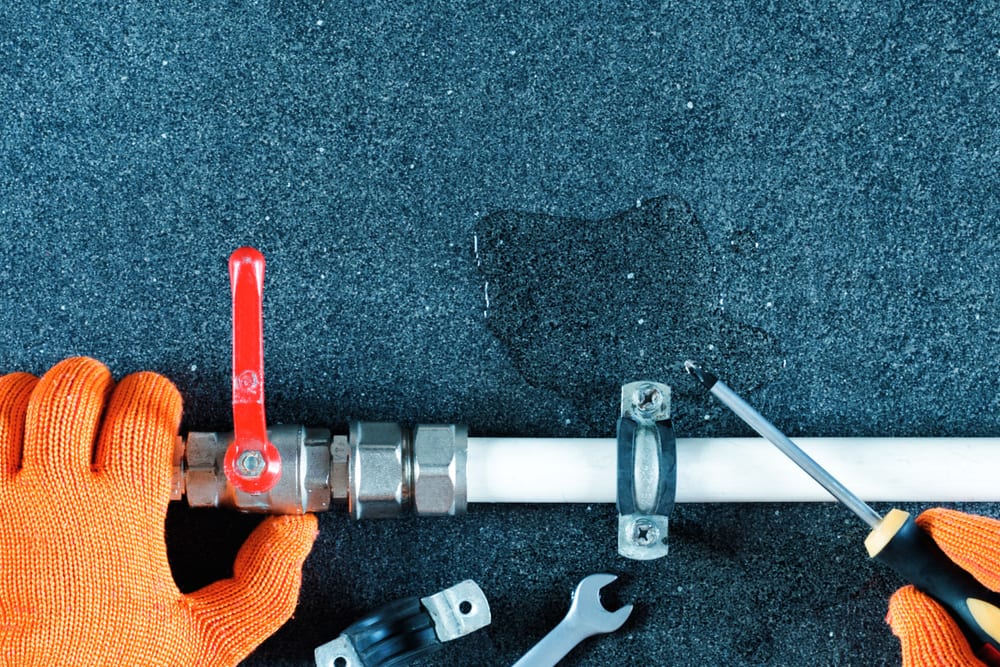Finding Sneaky Water Line Leaks: 6 Proven Techniques
Finding Sneaky Water Line Leaks: 6 Proven Techniques
Blog Article
This post listed below involving Hacks to detect leaks is rather stimulating. Don't skip it.

Early detection of leaking water lines can alleviate a possible disaster. Besides saving you cash, it will reduce the worry as well as disappointment. The minute you discover a leakage, calling your plumber for fixings is the best solution. Some tiny water leaks might not be noticeable. Below are some hacks that help if you can not discover it with your naked eyes.
1. Analyze the Water Meter
Every house has a water meter. Checking it is a surefire manner in which helps you discover leakages. For beginners, switch off all the water sources. Make sure no one will flush, make use of the faucet, shower, run the cleaning equipment or dishwashing machine. From there, go to the meter and watch if it will change. Because no person is using it, there ought to be no motions. That suggests a fast-moving leakage if it relocates. If you find no adjustments, wait a hr or 2 as well as inspect back once again. This indicates you might have a slow-moving leakage that can also be below ground.
2. Inspect Water Consumption
If you spot unexpected modifications, despite your consumption being the same, it means that you have leakages in your plumbing system. An unexpected spike in your bill suggests a fast-moving leak.
Meanwhile, a constant rise monthly, even with the exact same routines, reveals you have a sluggish leak that's also slowly rising. Call a plumber to extensively inspect your building, specifically if you really feel a warm location on your flooring with piping beneath.
3. Do a Food Coloring Test
When it comes to water usage, 30% comes from commodes. If the color in some way infiltrates your dish during that time without flushing, there's a leak in between the container as well as dish.
4. Asses Outside Lines
Don't neglect to inspect your exterior water lines too. Test spigots by affixing a garden pipe. Needs to water seep out of the connection, you have a loosened rubber gasket. Change this as well as make certain all links are limited. If you've obtained a sprinkler system, it will assist get it properly examined as well as preserved every year. One tiny leakage can squander lots of water and surge your water bill.
5. Check as well as Examine the Circumstance
House owners ought to make it a routine to inspect under the sink counters and also even inside closets for any type of bad odor or mold growth. These 2 warnings show a leak so timely attention is required. Doing regular evaluations, also bi-annually, can save you from a significant problem.
Check for stainings and deteriorating as many pipelines and devices have a life expectations. If you think dripping water lines in your plumbing system, don't wait for it to intensify.
Early detection of dripping water lines can mitigate a prospective calamity. Some tiny water leakages may not be visible. Inspecting it is a proven method that aids you discover leakages. One little leak can lose tons of water as well as spike your water expense.
If you believe leaking water lines in your plumbing system, do not wait for it to rise.
WARNING SIGNS OF WATER LEAKAGE BEHIND THE WALL
PERSISTENT MUSTY ODORS
As water slowly drips from a leaky pipe inside the wall, flooring and sheetrock stay damp and develop an odor similar to wet cardboard. It generates a musty smell that can help you find hidden leaks.
MOLD IN UNUSUAL AREAS
Mold usually grows in wet areas like kitchens, baths and laundry rooms. If you spot the stuff on walls or baseboards in other rooms of the house, it’s a good indicator of undetected water leaks.
STAINS THAT GROW
When mold thrives around a leaky pipe, it sometimes takes hold on the inside surface of the affected wall. A growing stain on otherwise clean sheetrock is often your sign of a hidden plumbing problem.
PEELING OR BUBBLING WALLPAPER / PAINT
This clue is easy to miss in rooms that don’t get much use. When you see wallpaper separating along seams or paint bubbling or flaking off the wall, blame sheetrock that stays wet because of an undetected leak.
BUCKLED CEILINGS AND STAINED FLOORS
If ceilings or floors in bathrooms, kitchens or laundry areas develop structural problems, don’t rule out constant damp inside the walls. Wet sheetrock can affect adjacent framing, flooring and ceilings.
https://www.servicemasterbyzaba.com/blog/how-to-detect-water-leakage-in-walls/

I recently found that blog post about Leaking water lines while exploring the search engines. Sharing is nice. Helping people is fun. Thank you so much for taking the time to read it.
Burst? Reach us! Report this page